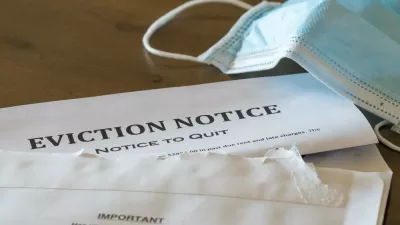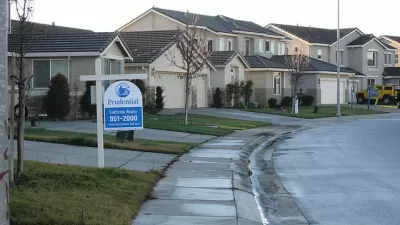Landlords have been unable to raise rents on rent stabilized apartments in Los Angeles since March 2020. Unlike in other large cities with similar rules, Los Angeles won't be removing the rent cap anytime soon.

Landlords in Los Angeles "are prohibited from raising the cost of more than 650,000 rent-stabilized units citywide, which represents nearly three-quarters of L.A.’s apartment stock," according to an article by Liam Dillon for the Los Angeles Times.
The prohibition was one of the measures signed into law by Mayor Eric Garcetti in an emergency order in March 2020, explains Dillon.
So far, the pandemic rent cap hasn't affected the city's housing market, but one local expert, Richard Green, director of the University of Southern California Lusk Center for Real Estate, is cited in the article warning about the potential long-term consequences of the rent cap. "But he said he worries that the longer it continues, the less likely it is for upwardly mobile tenants to leave their existing apartments, keeping what would be lower-cost units unavailable for others."
In the meantime, tenants are benefitting from cap—as rental price have rebounded from pandemic lows in January 2021 and even surpassing pre-pandemic levels in an already expensive city. And landlords are unhappy, saying it's harder to balance the books when factoring in so many increasing costs, "including labor and materials for building repairs as well as city fees for trash pickup."
Dillon also provides a comparison about Los Angeles' rent stabilization emergency order compared to other large cities around the country—New York, San Francisco, and Washington, D.C. Of those cities, Los Angeles is the only to leave its emergency rent stabilization rules in place beyond the first few months of 2022.
FULL STORY: Even in a hot market, L.A. won’t allow rent hikes for most tenants until 2023

Maui's Vacation Rental Debate Turns Ugly
Verbal attacks, misinformation campaigns and fistfights plague a high-stakes debate to convert thousands of vacation rentals into long-term housing.

Planetizen Federal Action Tracker
A weekly monitor of how Trump’s orders and actions are impacting planners and planning in America.

In Urban Planning, AI Prompting Could be the New Design Thinking
Creativity has long been key to great urban design. What if we see AI as our new creative partner?

Cal Fire Chatbot Fails to Answer Basic Questions
An AI chatbot designed to provide information about wildfires can’t answer questions about evacuation orders, among other problems.

What Happens if Trump Kills Section 8?
The Trump admin aims to slash federal rental aid by nearly half and shift distribution to states. Experts warn this could spike homelessness and destabilize communities nationwide.

Sean Duffy Targets Rainbow Crosswalks in Road Safety Efforts
Despite evidence that colorful crosswalks actually improve intersection safety — and the lack of almost any crosswalks at all on the nation’s most dangerous arterial roads — U.S. Transportation Secretary Duffy is calling on states to remove them.
Urban Design for Planners 1: Software Tools
This six-course series explores essential urban design concepts using open source software and equips planners with the tools they need to participate fully in the urban design process.
Planning for Universal Design
Learn the tools for implementing Universal Design in planning regulations.
Appalachian Highlands Housing Partners
Gallatin County Department of Planning & Community Development
Heyer Gruel & Associates PA
Mpact (founded as Rail~Volution)
City of Camden Redevelopment Agency
City of Astoria
City of Portland
City of Laramie





























